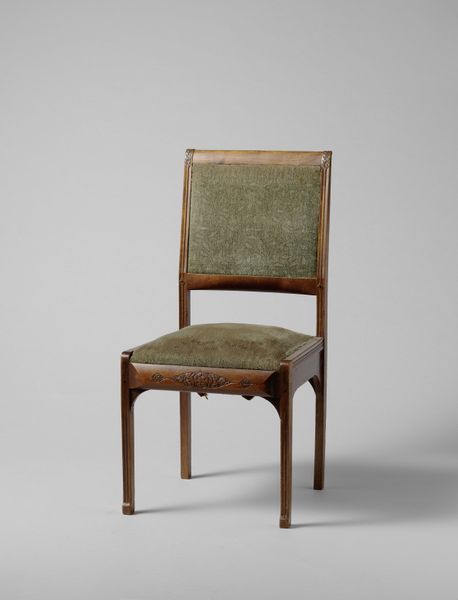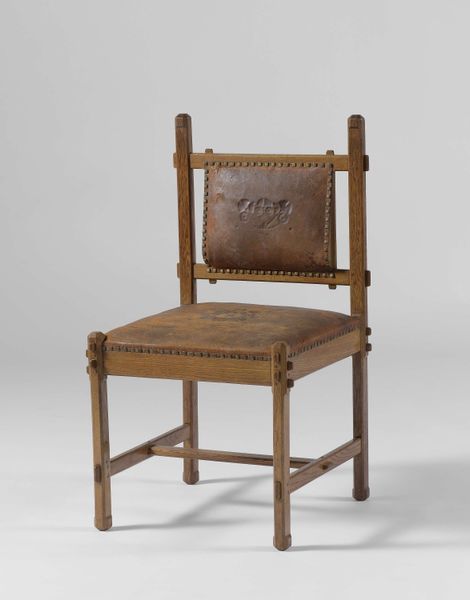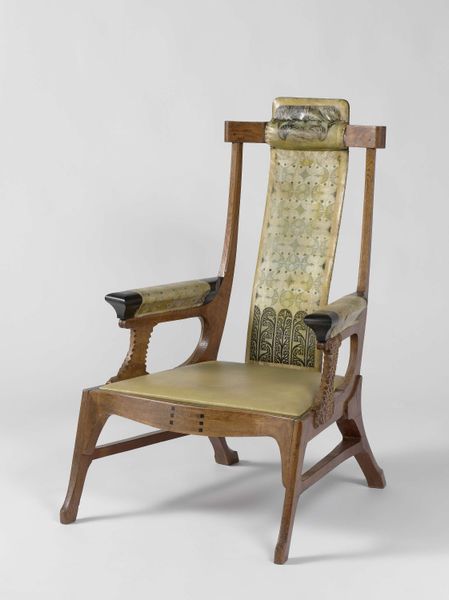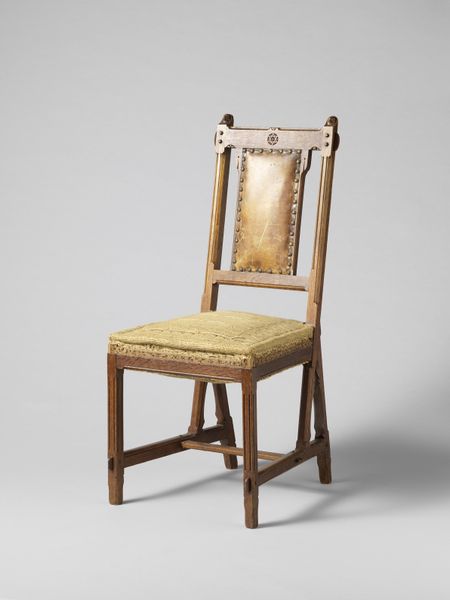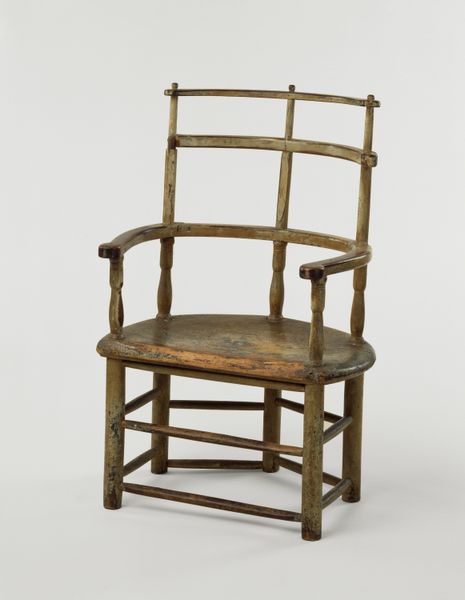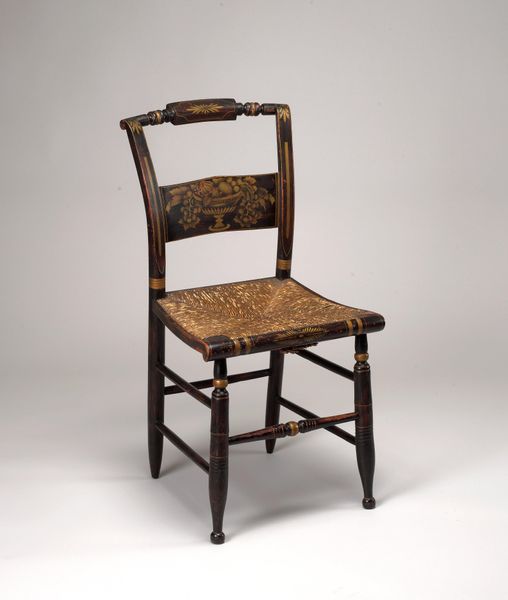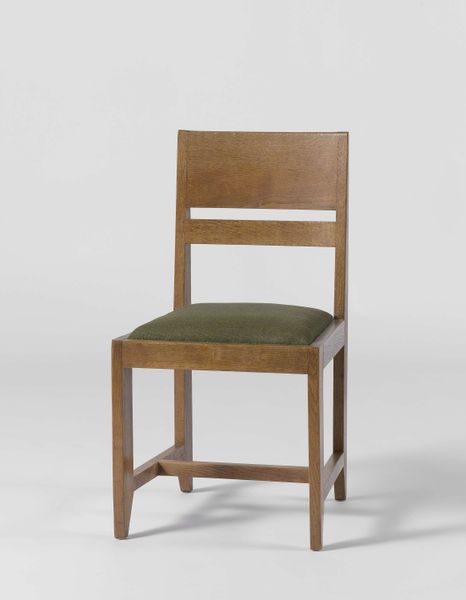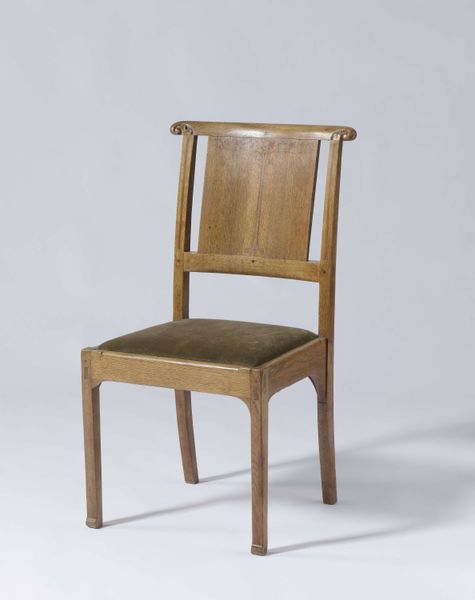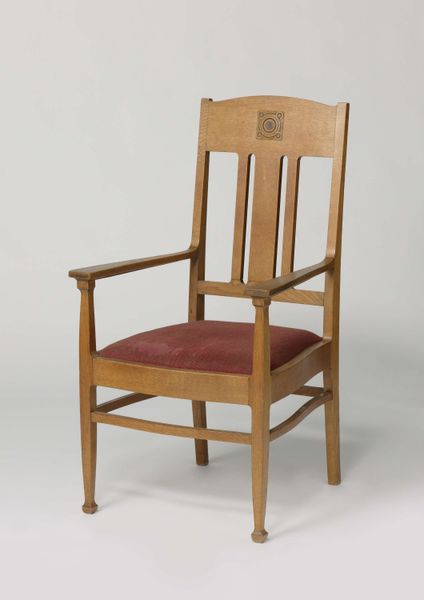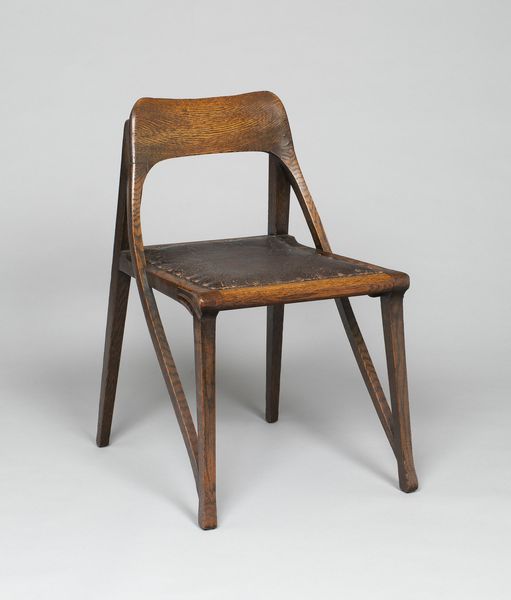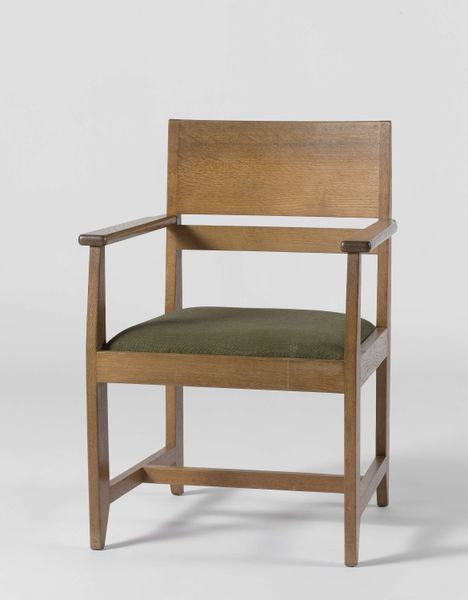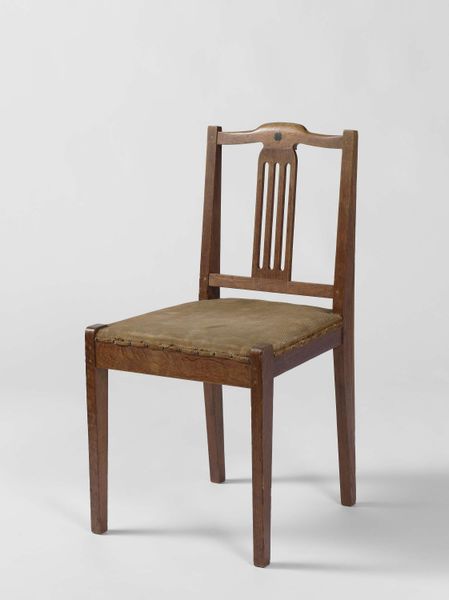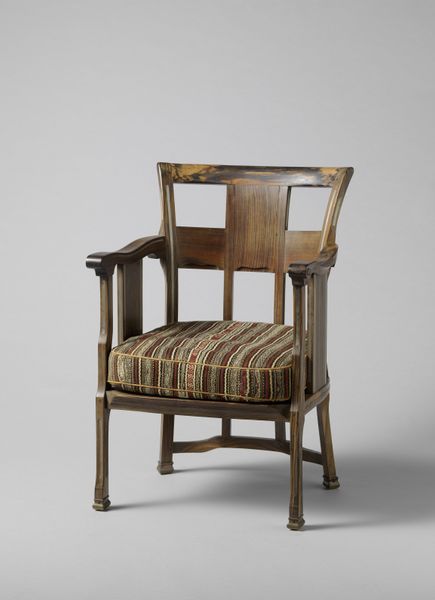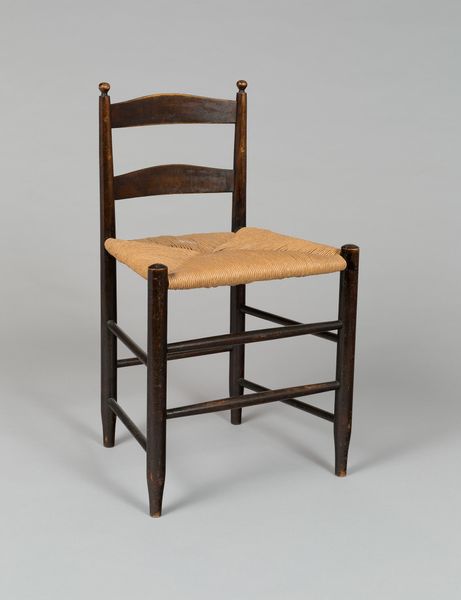
Stoel van coromandel- en buxushout, gedeeltelijk bekleed met trijp c. 1900
0:00
0:00
wood
#
arts-&-crafts-movement
#
furniture
#
wood
#
decorative-art
Dimensions: height 97.5 cm, width 49.5 cm, depth 48.5 cm, width 37 cm, depth 37 cm
Copyright: Rijks Museum: Open Domain
Editor: So, here's "Stoel van coromandel- en buxushout, gedeeltelijk bekleed met trijp," which translates to chair of coromandel and boxwood, partly upholstered with woolen fabric. It was created around 1900 by Gerrit Willem Dijsselhof. It has this sturdy, upright quality, almost austere. What do you see when you look at it? Curator: Immediately, I’m drawn to the materials: coromandel and boxwood are not everyday choices. This suggests a specific engagement with materiality. The Arts and Crafts movement was keen on elevating craft to the level of fine art. To me, the means of production here seem significant. What can you tell me about the trijp upholstery? Editor: Well, I see it's a muted green color, and the texture seems soft, contrasting with the wood. I also notice the small geometric patterned section on the upper part of the chair's back, between the coromandel wood sections. How does the choice of these materials fit within the broader social context of the Arts and Crafts movement? Curator: Good question! The emphasis on "honest" materials and skilled handcraft was a direct response to industrialization and mass production. This chair signifies a desire to reconnect with traditional techniques, highlighting the labor and the maker’s touch, even with the implication of conspicuous consumption by Dijsselhof's patrons. How do you view the simple design? Editor: It feels both functional and deliberately artistic, steering away from ornate decoration while emphasizing quality of construction. Almost as if the value lies in the making. Curator: Exactly! The focus isn’t just on aesthetics; it’s on the entire process. The chair then becomes an object embodying values, a statement against disposable, mass-produced goods. I find it fascinating how a chair can speak volumes about a society's values and the labor practices it upholds. Editor: I hadn't considered how the materials themselves make such a powerful statement about production and consumption. It really does change how I see the chair. Thanks! Curator: Absolutely, looking at art through the lens of materiality reveals so much about the social and cultural forces at play. It gives agency to even a simple chair.
Comments
No comments
Be the first to comment and join the conversation on the ultimate creative platform.
